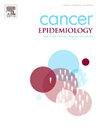Algorithm development for identifying breast cancer incident cases and epidemiological updates: A cohort study based on multiple secondary sources
IF 2.3
3区 医学
Q3 ONCOLOGY
引用次数: 0
Abstract
Purpose
This study aimed to develop and validate an algorithm for identifying incident breast cancer (BC) cases using Healthcare Utilization Databases (HUDs) and to assess BC incidence trends in the Marche Region, Italy, from 2010 to 2021.
Methods
This population-based longitudinal study included women aged ≥ 18 years residing in Marche. The HUDs Algorithm was developed to identify new BC cases using hospital discharge, outpatient, and beneficiary databases, and it was validated against the Cancer Registry by evaluating agreement, sensitivity, and positive predictive value (PPV). Age-standardized BC incidence rates were estimated. A Poisson regression model was used to assess trends, including comparisons between pre/post COVID-19 pandemic periods.
Results
Validation results showed a sensitivity of 81.2 % and PPV of 85.0 %. A total of 18,158 incident BC cases were identified, with a mean incidence rate of 224.7 per 100,000 person-years (95 % CI: 221.5–228.0). No significant increase in BC incidence was observed over time, but a marked decline occurred in 2020–2021, likely due to COVID-19-related disruptions.
Conclusions
HUDs can be a valuable complementary data source, providing additional information useful for timely epidemiological surveillance and supporting rapid public health responses in cases where Cancer Registry data are delayed. Further refinements and integration with other data could enhance the accuracy of the HUDs Algorithm.
识别乳腺癌事件病例和流行病学更新的算法开发:基于多个次要来源的队列研究
目的:本研究旨在利用医疗保健利用数据库(hud)开发并验证一种识别乳腺癌(BC)病例的算法,并评估2010年至2021年意大利马尔凯地区的BC发病率趋势。方法:这项以人群为基础的纵向研究纳入了年龄≥ 18岁居住在Marche的女性。开发hud算法用于使用出院、门诊和受益人数据库识别新的BC病例,并通过评估一致性、敏感性和阳性预测值(PPV)与癌症登记处进行验证。估计年龄标准化的BC发病率。使用泊松回归模型评估趋势,包括COVID-19大流行前后的比较。结果验证结果灵敏度为81.2 %,PPV为85.0% %。共发现18158例BC病例,平均发病率为每10万人年224.7例(95 % CI: 221.5-228.0)。随着时间的推移,BC的发病率没有显著增加,但在2020-2021年出现了显著下降,这可能是由于与covid -19相关的中断。结论shds可作为一种有价值的补充数据源,为及时开展流行病学监测提供有用的额外信息,并在癌症登记数据延迟的情况下支持快速的公共卫生反应。进一步的细化和与其他数据的整合可以提高HUDs算法的准确性。
本文章由计算机程序翻译,如有差异,请以英文原文为准。
求助全文
约1分钟内获得全文
求助全文
来源期刊

Cancer Epidemiology
医学-肿瘤学
CiteScore
4.50
自引率
3.80%
发文量
200
审稿时长
39 days
期刊介绍:
Cancer Epidemiology is dedicated to increasing understanding about cancer causes, prevention and control. The scope of the journal embraces all aspects of cancer epidemiology including:
• Descriptive epidemiology
• Studies of risk factors for disease initiation, development and prognosis
• Screening and early detection
• Prevention and control
• Methodological issues
The journal publishes original research articles (full length and short reports), systematic reviews and meta-analyses, editorials, commentaries and letters to the editor commenting on previously published research.
 求助内容:
求助内容: 应助结果提醒方式:
应助结果提醒方式:


